Pickaxes or Earwigs in the Garden: [Identify and Combat]
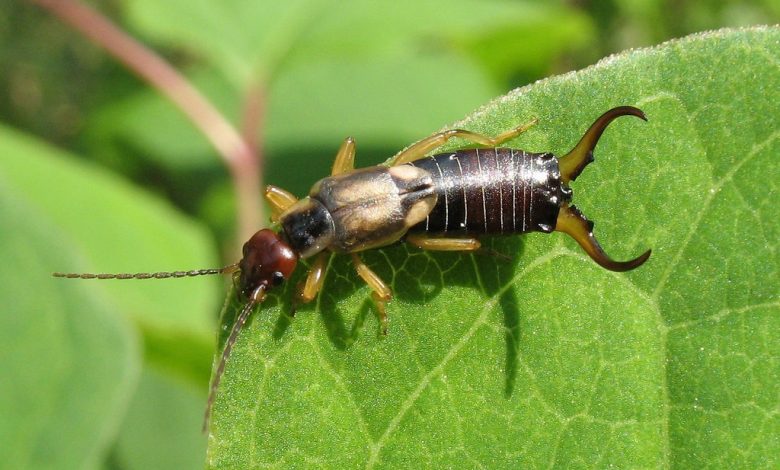
In this article you will learn how to identify earwigs, also known as beak cutters, scissors cutter, picha cutter, earwig, scissors bug, cape cutter. As well as knowing what methods are the most effective for its control and elimination. You will know what the behavior of this species of insect is and why, on some occasions, it is even beneficial for our garden or orchard.
One of the most unique looking garden insects is the earwig.
This insect, which is a few centimeters long and has a flattened brown body reminiscent of a cockroach, has fearsome-looking but harmless claws and two pairs of wings.
They are often found fluttering in damp garden mulch or under logs and other debris.
Despite their unsightly appearance, earwigs are not a very serious garden pest, and sometimes they are more friend than foe.
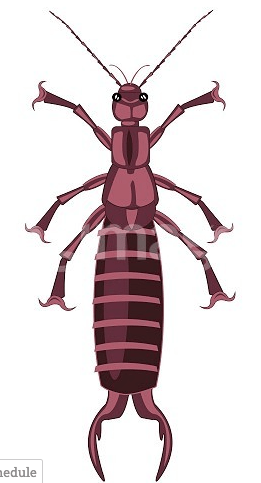
It’s true that earwigs (Forficula auricularia) can feed on young shoots and can occasionally foul leaves and even flowers, but the amount of damage they cause shouldn’t be much of a problem in most gardens.
The repulsion that some people feel for earwigs is due more to their appearance than their behavior.
To their credit, earwigs feed on aphids, snails, slugs, and some types of insect larvae, so you may want to keep them close by. However, as with all creatures that are not welcome in a garden, earwigs can sometimes be considered a pest.
When this happens, be patient. You should know why earwigs are attracted to your orchard or garden. Controlling them is often just a matter of adjusting the environment.
What are earwigs or beak cutters?
Earwigs can be found in almost any growing area, although they are more likely to inhabit hot, humid climates.
You may find it hard to spot them: not only are they fast movers, but they are nocturnal and tend to hide during the day when you are tending to the garden.
They like decaying wood and plant material, and dark, moist spaces. They are often found in basements and woodpiles.
Earwigs are the only members of the insect order Dermaptera, ancient bugs that began crawling on Earth about 208 million years ago.
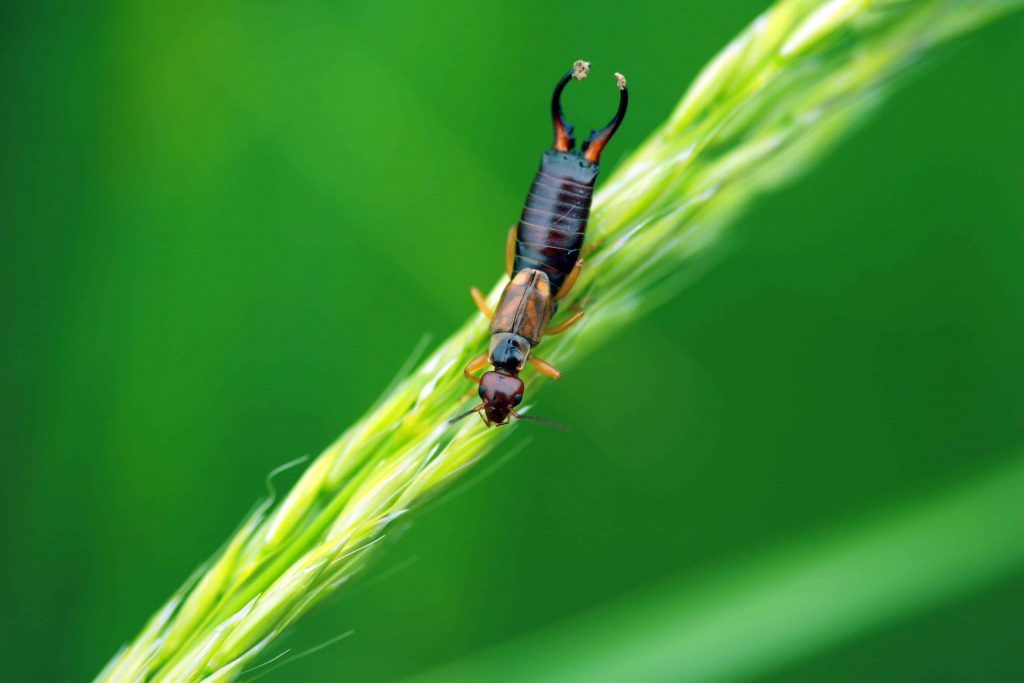
Currently, there are about 2,000 species spread throughout the world except in the polar regions of the Earth. In France, they are called «ear piercers» and in Germany, » ear worms.»
In North America, we are most familiar with Forficula auricularia, a European species believed to have arrived with our immigrant ancestors. Earwigs first arrived in North America in the early 20th century, and have now spread throughout most of the United States and parts of Canada.
Earwigs enjoy a lively social life. They meet during the day because they often find the same hiding places. Their nests can be thousands and they are not territorial, so they usually live together.
Characteristics of earwigs
- Common name: Common earwig.
- Scientific name: Forficula auricularia.
- Affected plants: Mainly dahlias, clematis and chrysanthemums.
- Main symptoms: Young leaves and flower petals are eaten. Earwigs are present on plants at dusk.
- When do they act? At night. Most active from May to September.
What causes earwigs in the garden or orchard?
Earwigs like moist, sheltered places, such as mulched flower beds or areas under potted plants.
These conditions, along with a food supply, will entice earwigs to enter your garden. However, as they are considered beneficial insects, they are only treated as pests when their damage is excessive.
Earwigs often eat plant debris that they find on garden soil and under containers.
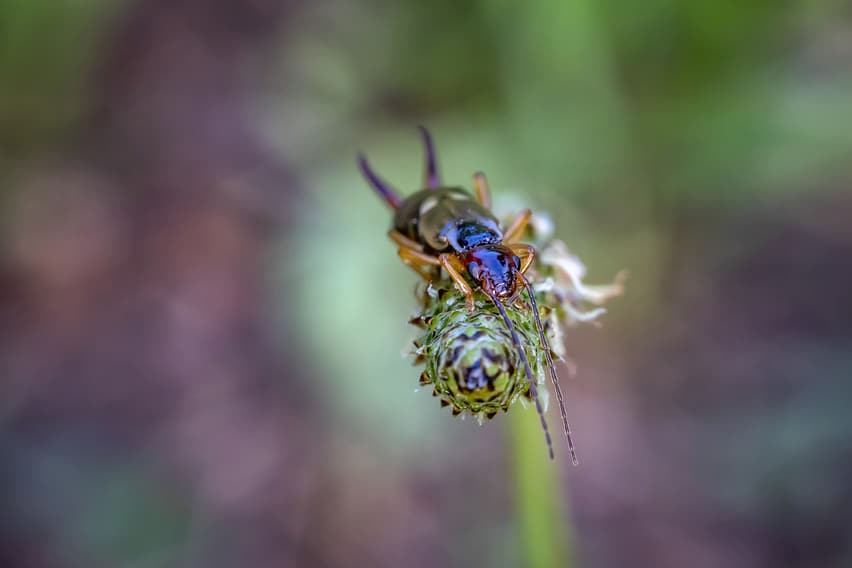
They can also feed on a wide range of garden plants, and seem to be especially fond of grasses and corn tassels, as well as dahlias, marigolds, roses, and zinnias.
They can also be a pest of fruits such as berries, apricots, and peaches.
In addition, it has been observed that they are effective in controlling the aphid when it affects citrus fruits.
Unfortunately, if none of their favorites are present, earwigs can feed on any plant they can find.
But earwigs are often considered beneficial insects and are sometimes deliberately introduced to control aphids and other harmful insects. Seeing just a few is more cause for celebration than panic.
Garden earwigs should only be controlled when the damage they cause to plants outweighs their benefits.
Where are pickaxes usually hidden?
Earwigs are nocturnal; they hide in cool, moist places during the day and feed at night.
Earwig damage mimics that of caterpillars and slugs, so be sure to identify the real culprits by checking to see if earwigs feed on your plants after dark.
Earwigs are unusual among insects, as the female cares for her eggs and nymphs and uses her pincers to protect them.
Overwintering adult earwigs lay clusters of round, white eggs on the ground in late winter ; the larvae, which resemble adult earwigs, hatch in spring.
Adult specimens spend the winter under garden debris, stones and boards, as well as on the ground.
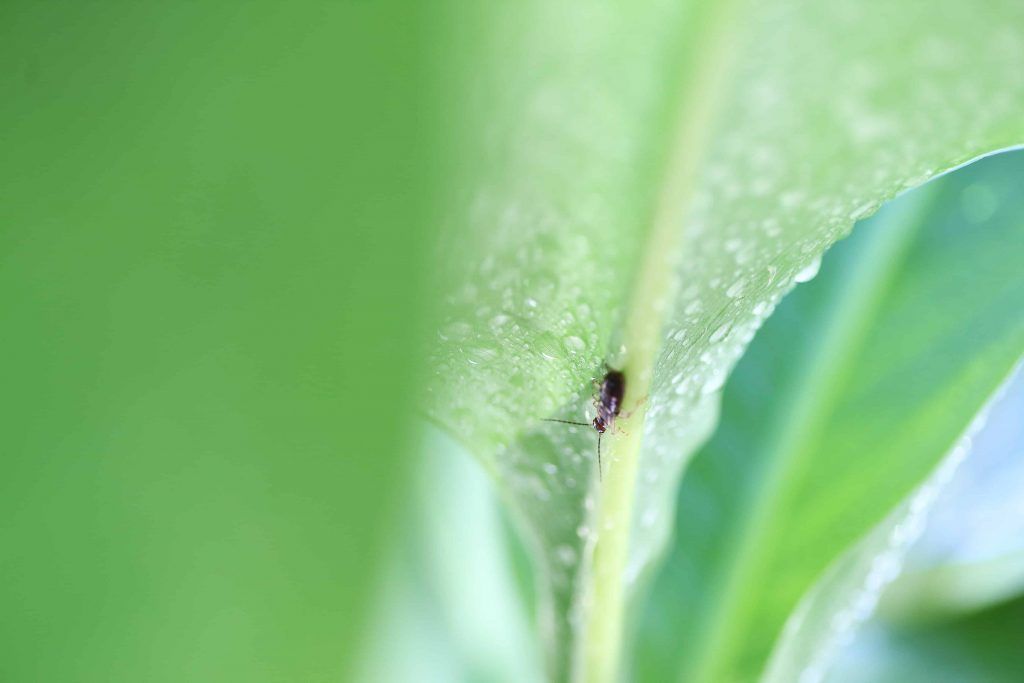
How do we identify these insects?
- Earwigs grow to a few centimeters.
- They are reddish-brown insects with pincer-like tail appendages. Not many insects have claws that look as ugly as the earwig’s. That’s why some call them «pincer bugs» or «pinching bugs.» These appendages, attached to the insect’s abdomen, are called cerci.
- Earwigs run very fast and can also fly, although they rarely do. They actually have two sets of wings, and their pincers help them spread them out.
- Nocturnal in nature, earwigs feed primarily on decaying plant material and wood, but will also attack living plants, including vegetables, fruit trees, and ornamentals, if given the opportunity.
- Earwigs especially like flowers, lettuce, celery, and fruit.
- Female earwigs lay 40 to 50 shiny eggs in underground tunnels. The eggs are protected from predators and hatch in about a week, making it very difficult to control earwig populations before they hatch.
- Nymphs simply look like miniature versions of adult earwigs. They shed several skins and, ten weeks later, reach adulthood.
- Earwigs often hide under flower pots during the day and then eat the flowers in the pots at night.
Ways to eliminate earwigs in your garden or orchard
dry the garden
The first strategy to try – and often the only one necessary – is to remove the mulch from the ground in the area where they congregate and allow the soil to dry out a bit. This only needs to be done temporarily, until the earwigs go away.
You can then reapply the mulch to enjoy the benefits it brings to your garden or orchard soil.
Removing mulch can also have the benefit of reducing slugs, snails, and similar pests, since they, too, thrive in moist debris that covers garden soil.
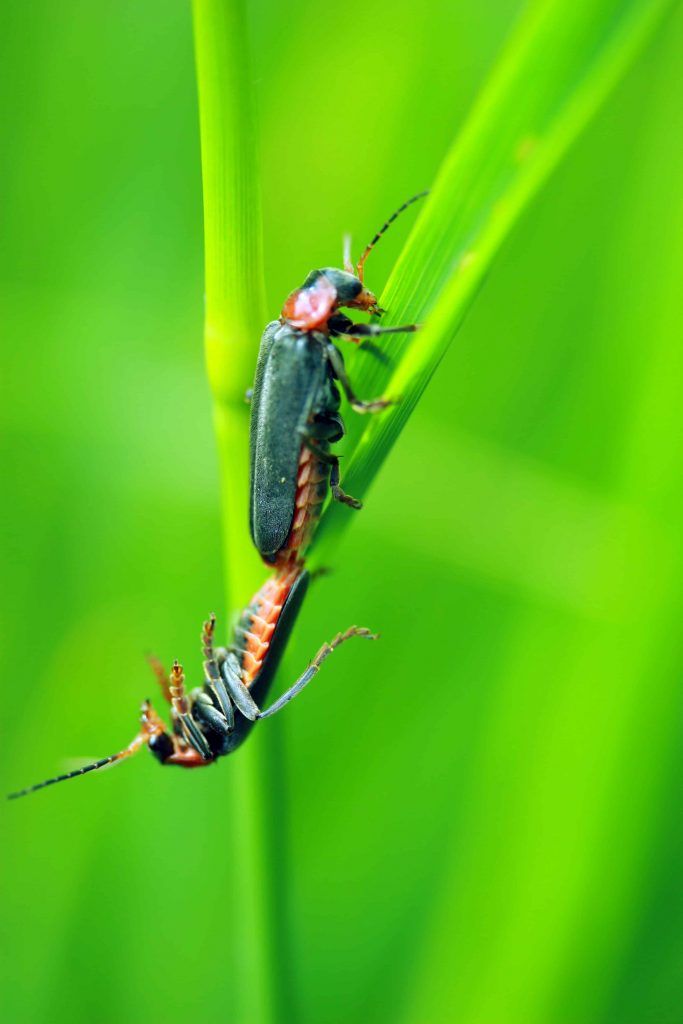
Use homemade traps
Place damp, rolled-up newspapers or small cardboard boxes (such as cereal boxes) in the garden area at night. Earwigs feed at night and seek a moist, sheltered place to spend the day.
The next morning you can pick up quite a few in the newspaper.
Another method is to set shallow cat food or tuna can traps filled with a thin layer of vegetable oil.
Insects will be attracted to the oil as a food source and you will be able to remove large numbers of them daily.
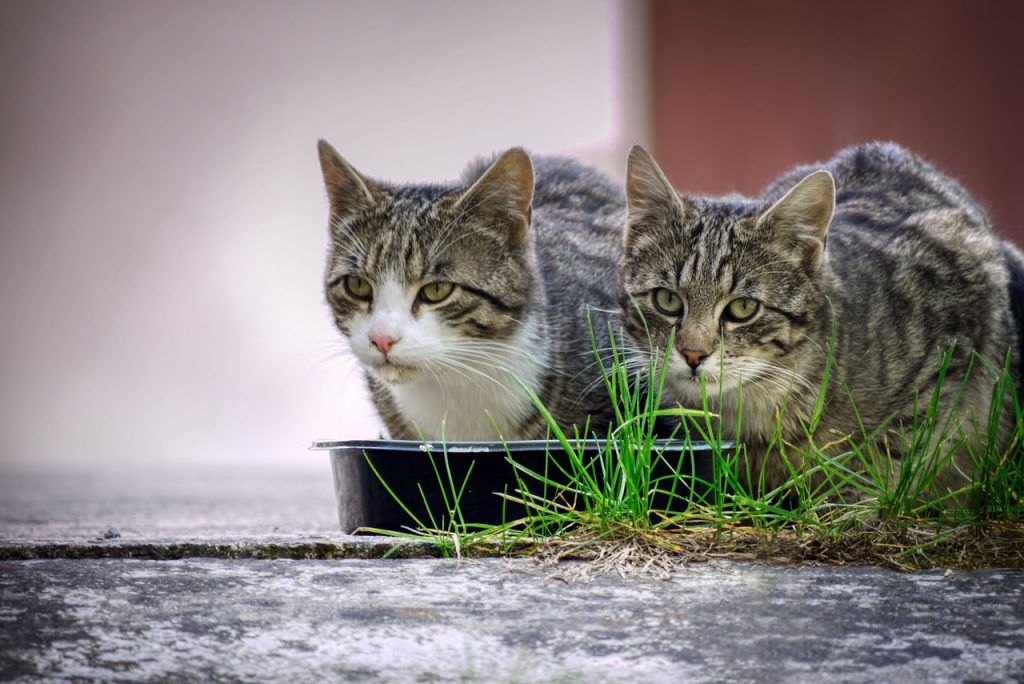
Apply adhesive tapes
Apply a sticky or adhesive tape. Even petroleum jelly at the base of woody plants.
Earwigs are crawling and will get caught in the sticky tape before they can climb up the tree or bush to cause damage.

Apply diatomaceous earth
Apply diatomaceous earth (DE) to the soil to deter earwigs. Reapply after a week, if necessary.
Diatomaceous earth is a naturally occurring mineral that contains the powdered remains of fossilized diatoms, a type of hard-shelled algae.
Diatomaceous earth works as a pesticide because the dust penetrates the shell or skin of creatures like earwigs, slugs, and snails, causing them to lose body moisture.
It is a natural and non-chemical pest control remedy and is often used by organic gardeners.
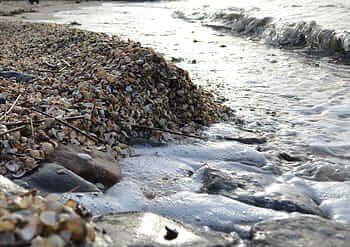
use pesticides
As a last resort, outdoor insecticides labeled for crawling insects can be used. Follow the manufacturer’s instructions very carefully. Normally, it is best to apply the treatments at night, before they start to feed.
Neem oil or potassium soap are also often helpful.
What signs do my plants show if they are being attacked by earwigs?
- Leaves will appear jagged and full of holes. Plants will become ragged overnight, with some leaves only partially eaten. There is also likely to be a scattering of earwig droppings, which will be small black pellets.
- Damage usually occurs after rains, which force earwigs to seek dry shelter and climb on plants and leaves.
- You may find earwigs under pots containing damaged plants.
- The damage caused by earwigs is similar to that of slugs and snails. To tell them apart, look for signs of slugs and snails: a trail of slime residue on foliage, for example.
Do earwigs bite humans?
Earwigs do not usually feed on blood or sting, but may sting as a defensive move if one is picked up by hand.
How long do earwigs live?
Earwigs live for about a year from hatching.
Mating occurs in the fall, at which time you can find the males and females living together on debris, in cracks, or on the ground.
The eggs are laid in late winter or early spring, and in about seven days they hatch into nymphs, which are smaller versions of the adult insects. Through a series of molts, the nymphs gradually transform into adults, which mate in the fall.
The older generation usually dies at some point during the growth of the nymphs into adults. In warm climates, two generations of garden earwigs may appear each year.
Because the cold kills most earwigs, relatively few mating pairs survive the winter to breed. Therefore, it is not an insect that is usually found in large numbers in colder climates.
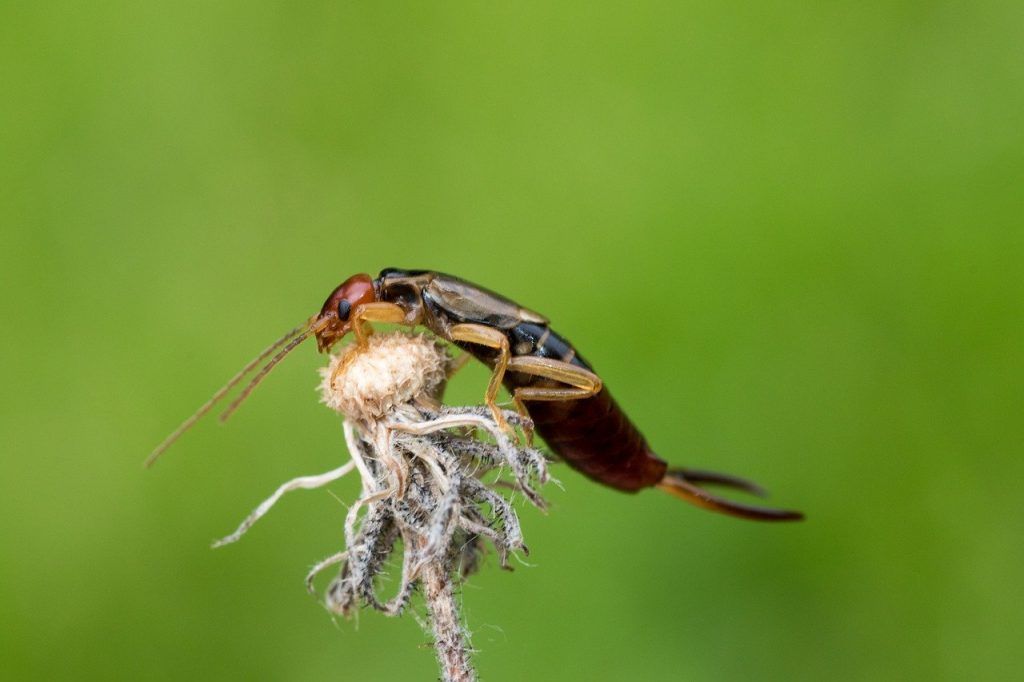
What do earwigs or beak cutters eat?
Earwigs are omnivorous, that is, they eat practically anything that is offered to them.
In the garden, they feed mainly on dead or decaying plant and animal matter. However, they also feed on aphids, insect eggs, caterpillars, larvae, and earthworms.
When their population gets out of control, they may feed on living plant matter, especially the seedlings or young foliage of vegetables and flowers.
Should we eliminate this pest from our garden or orchard?
This poses a dilemma for gardeners… Should earwigs be allowed to remain in the garden to eat aphids and other pests?
Or do we have to eliminate them before they go to the plants?
Earwigs generally do not cause enough damage to be worth fighting. However, if you see a large number of them around your plants, you may want to consider taking action.
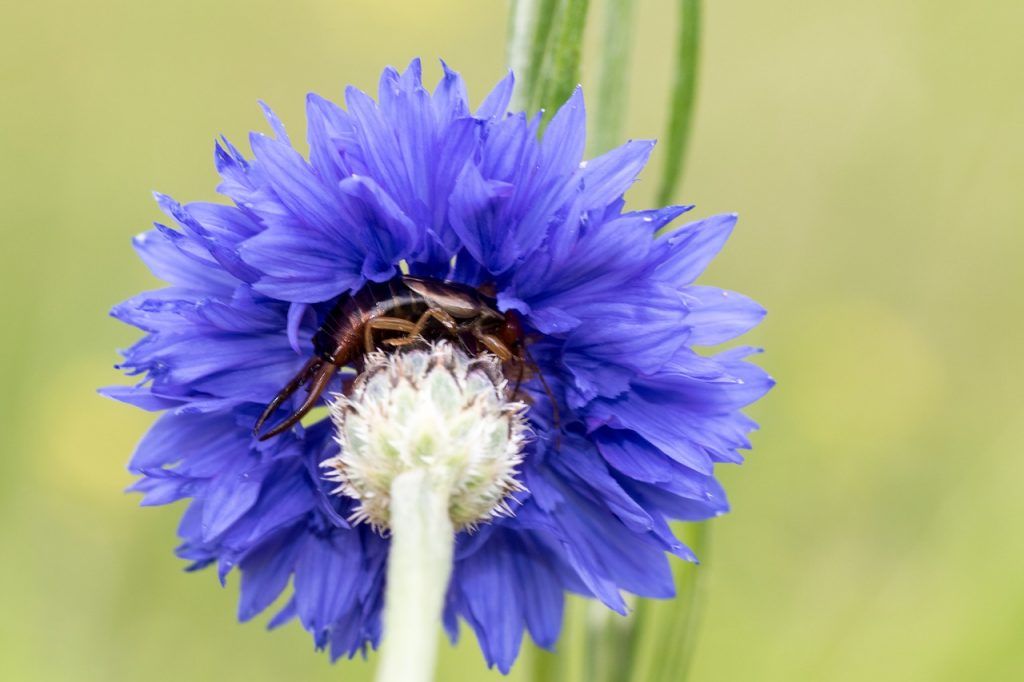
Do earwigs transmit diseases?
Earwigs are not disease carriers, but if they were, they would not cause much of a problem as they practically never bite, nor do they transmit pathogens to food consumed by humans.
However, they can potentially transmit fungal or bacterial diseases of plants in the garden, although such transmission is much more likely with other insects that feed primarily on live plants.
Can earwigs be found indoors?
There are many species of Forficula that go by the common name earwig, and some of them are relatively common pantry pests.
However, the common (or European) earwig (F. auricularia) is primarily an outdoor insect that is only occasionally found indoors.
When they are found indoors, it is usually in dark, damp areas, such as under stacks of newspapers or cardboard boxes.
They can also finger potted houseplants that spend the summer outdoors.
But the common earwig doesn’t seek out indoor environments to feed or spend the winter. If you see these types of insects indoors and they are in large numbers, it is most likely a different, similar-looking species of earwig.
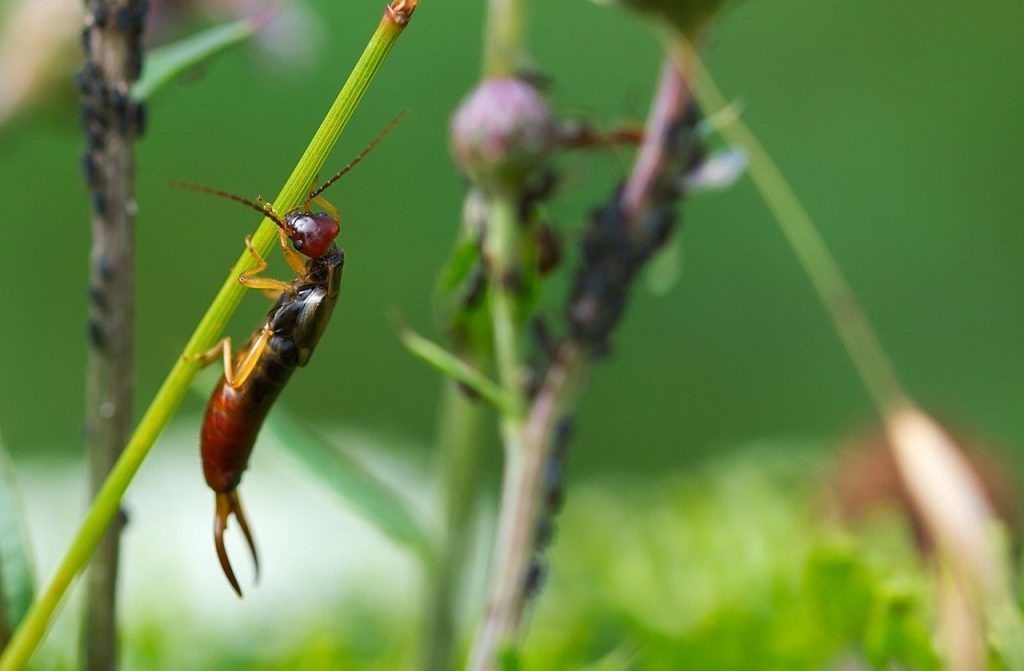
Where does the name «earwig» or «cutter» come from?
The common name derives from the Greek words ēare, meaning «ear», and wicga, meaning «beetle».
There are several theories about the origin of the earwig name.
Some entomologists believe it derives from the fact that the hindwings resemble a human ear when outstretched.
A more accepted view is that it derives from an old wives’ tale that earwigs entered the human brain through the ear canal to lay eggs, which has spawned several plot lines in horror and science fiction films.
It may have been more of a cautionary tale to convince children to improve their hygiene, as there is virtually no legitimate evidence of such a thing, although it is not unheard of for insects to accidentally end up in the human ear.
Bibliography and references
-
Earwigs, surprising animals, M García-París – 2015 – digital.csic.es
-
From saying to doing in a proposal on ecosystems contextualized in the school garden, MJ Sáez Bondía, P Lucha López, AM Claver Giménez… – Apice, 2017 – ruc.udc.es
-
[PDF] The sustainable garden, J Jeavons, C Cox – 2007 – bosquedeniebla.com.mx
-
[PDF] Earwigs (Dermaptera, Forficulidae) in citrus aphid control, N Cañellas, J Piñol, X Espadaler – Bol. San. Veg. Pests, 2005 – mapa.gob.es
-
[QUOTES] How to control earwigs. B Diaz, J Cirielli, A Burgos – sidalc.net
-
Fruit Pests: Apricot, M Murray, DG Alston – 2020 – digitalcommons.usu.edu
-
Biological control in apple cultivation, M Miñarro Prado – ria.asturias.es

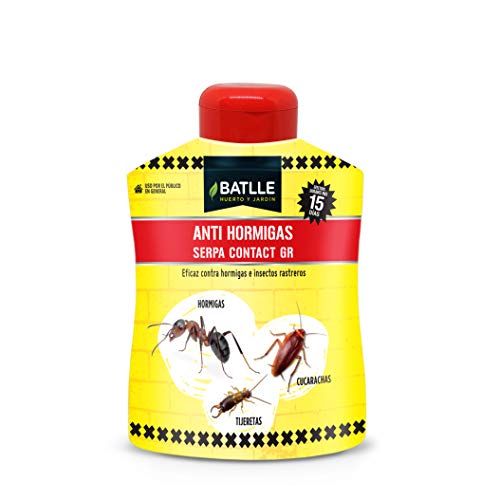
![Photo of Tree Cuttings: [Concept, Period, Rooting and Planting]](https://www.complete-gardening.com/wp-content/uploads/2022/08/tree-cuttings-concept-period-rooting-and-planting-390x220.png)

![Photo of How to Plant Peonies in Your Garden: [Complete Guide + Step by Step]](https://www.complete-gardening.com/wp-content/uploads/2021/06/sembrar-peonias-390x220.jpg)
![Photo of Temperate Continental Climate: [Characteristics, Flora, Fauna and Adaptability]](https://www.complete-gardening.com/wp-content/uploads/2022/08/temperate-continental-climate-characteristics-flora-fauna-and-adaptability-390x220.jpg)